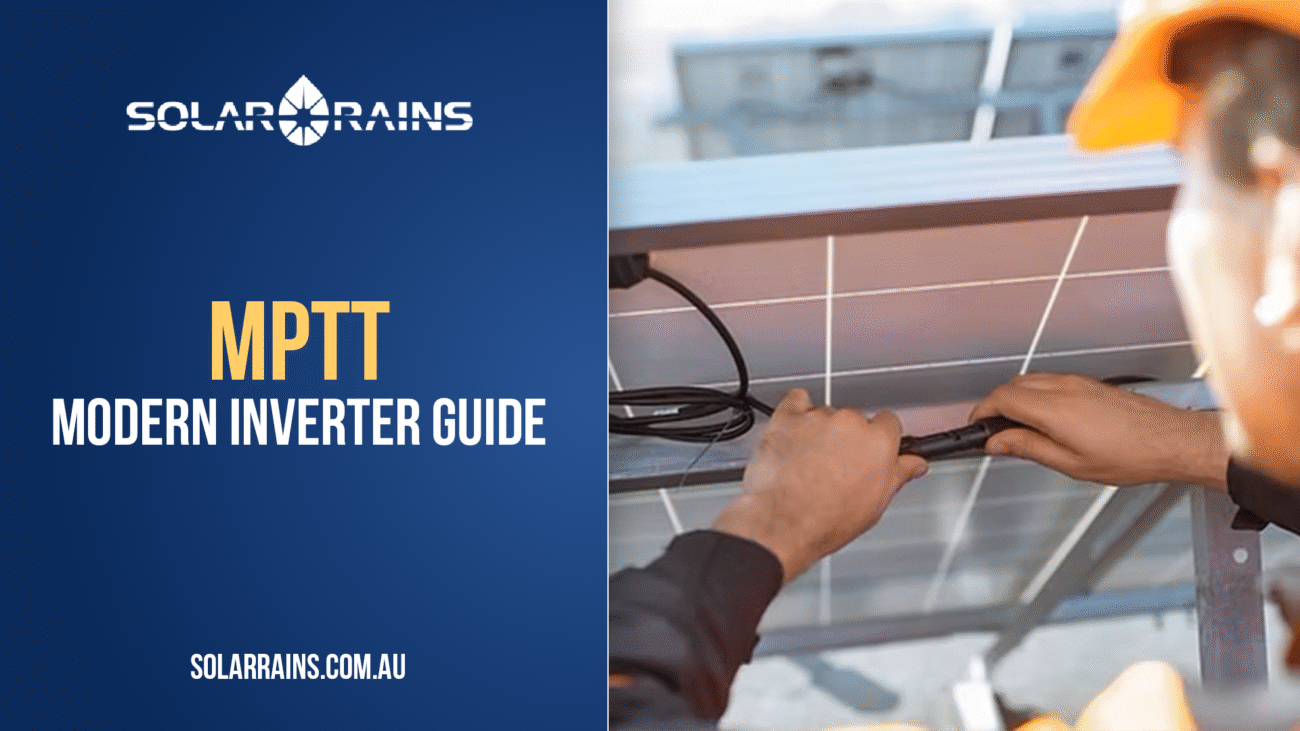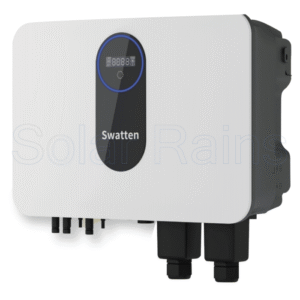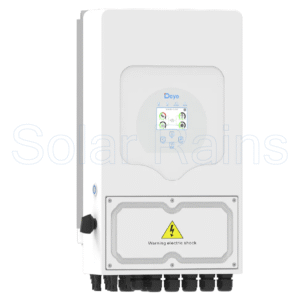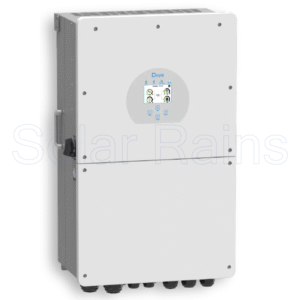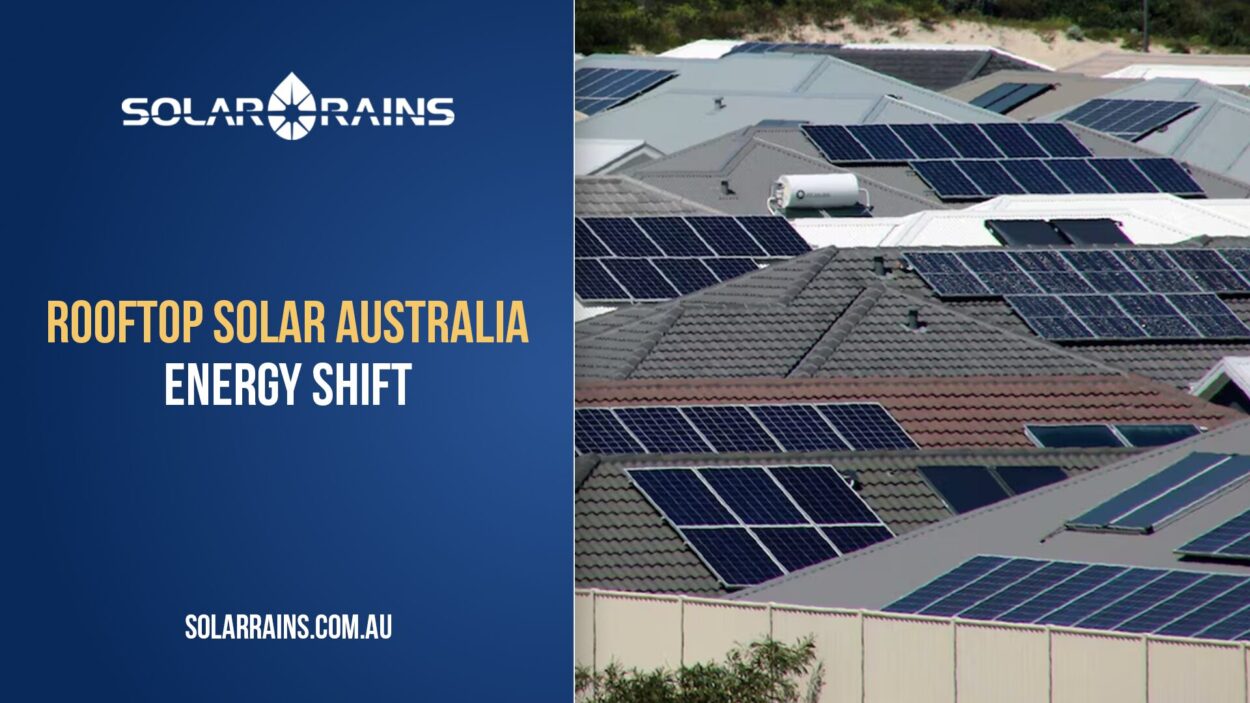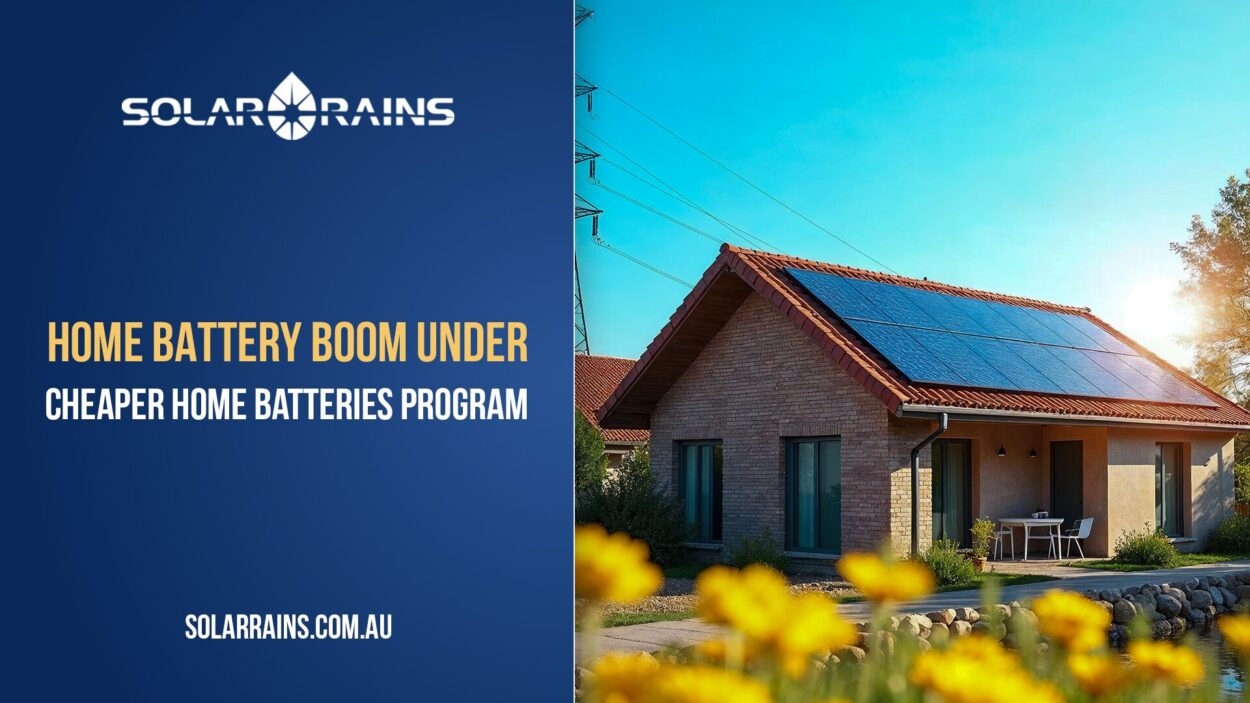In the rapidly evolving world of solar energy, extracting the most electricity from your solar panels is a top priority, especially as energy costs rise and feed-in tariffs fall. That’s where MPPT technology comes into play.
Maximum Power Point Tracking (MPPT) is an advanced electronic algorithm built into modern solar inverters. It allows the inverter to constantly find the optimal operating point of a solar array, helping maximise power output, even under challenging conditions like shade, temperature fluctuations, or panel mismatches.
In this article, we’ll break down what MPPT is, how it works, and why it’s indispensable in today’s hybrid and grid-tied solar products.
What Is MPPT in a Solar Inverter?
MPPT stands for Maximum Power Point Tracking. It’s a technique used by solar inverters to extract the highest possible power from a solar panel by constantly adjusting the electrical operating point of the modules.
Every solar panel has a “sweet spot” on its current-voltage (I-V) curve where it produces maximum power. However, this point shifts based on factors like sunlight intensity, panel temperature, and shading. MPPT inverters automatically detect and track this optimal point.
Unlike traditional inverters that operate at fixed voltages, MPPT-enabled inverters dynamically adjust voltage and current to maximise power.
How Does MPPT Work?
Here’s a simplified explanation of how MPPT works:
- Input from PV Array: The inverter receives power from the solar panel.
- Sensing & Calculation: It monitors the panel’s voltage and current.
- Algorithmic Adjustment: The MPPT algorithm calculates the point where power (P = V x I) is at its peak.
- Constant Tracking: It adjusts the load to match that point and continues tracking as environmental conditions change.
In essence, MPPT acts like a smart traffic controller directing energy flow in the most efficient way possible.
Key Features of MPPT Solar Inverters
- Dynamic Adaptation: Responds in real-time to temperature and irradiance variations.
- High Conversion Efficiency: Often above 98%, ensuring minimal losses.
- Multiple MPPT Inputs: Some high-end models (e.g. Deye Hybrid Inverter) have dual or triple MPPTs, perfect for rooftops with different orientations.
- Smart Monitoring: Connects to apps or dashboards for live tracking and system health.
- Built-in Protections: Includes overvoltage, overcurrent, short-circuit and reverse polarity protection.
These features make MPPT-equipped solar inverters especially valuable in residential and commercial systems.
Main Benefits of MPPT Technology
- Higher Yield: Increases overall energy output by 10–30% compared to non-MPPT systems.
- Cost-Effective: More electricity generation = faster payback.
- Adaptability: Works efficiently even with partial shading or different panel brands.
- Battery Compatibility: Perfect for hybrid systems with solar batteries charging batteries more effectively.
MPPT vs Traditional Inverters
| Feature | Traditional Inverter | MPPT Inverter |
| Voltage Control | Fixed | Dynamic |
| Efficiency | Lower (70–85%) | Higher (95–99%) |
| Shade Handling | Poor | Good |
| ROI | Slower | Faster |
| Price | Lower upfront | Higher, but pays off long-term |
If you’re a solar supplier or installer, recommending MPPT inverters to customers is a value-add decision that supports both savings and performance.
Applications and Future Prospects
Residential Use
MPPT inverters are ideal for homes with east-west roofs, variable shade, or hybrid battery setups. They ensure each string of panels operates efficiently.
Commercial Use
In multi-array commercial installations, multiple MPPTs help isolate performance issues and optimize individual sections, crucial for long-term ROI.
Off-grid & Hybrid Systems
When paired with hybrid batteries, MPPT ensures fast charging and better energy autonomy, making them popular in remote or backup-critical locations.
As the world shifts toward electrification and self-sufficiency, MPPT is becoming the default choice across Australia’s solar power suppliers and users.
Why Is MPPT Important in Modern Solar Inverters?
In the context of Australia’s extreme weather, rising energy costs, and evolving solar product wholesale landscape, the need for high-efficiency energy systems is clearer than ever.
MPPT ensures:
- Maximum energy harvest from every ray of sunlight.
- Protection for your solar investment in non-ideal conditions.
- Smooth integration with future upgrades like solar batteries.
Whether you’re a homeowner or business choosing between models like the Deye Single-Phase Hybrid Inverter or Swatten 6kW Hybrid Inverter, always confirm MPPT is included.
Who Should Use MPPT Inverters?
- Homeowners with unpredictable shade or roof geometry.
- Businesses seeking optimal ROI from solar infrastructure.
- Solar retailers & power suppliers who want to offer competitive products.
- Off-grid property owners who rely on efficient solar-battery interactions.
- Installers who want fewer callbacks and smoother troubleshooting.
FAQs
Yes. MPPT inverters are panel-agnostic, though they must match your array’s voltage and current ratings.
Slightly, but the improved performance typically covers the cost difference within 1–2 years.
Yes. While it can’t eliminate shading losses, MPPT helps mitigate them by tracking the best-performing point dynamically.
Yes. Products like the Deye Three-Phase Hybrid Inverter offer multiple MPPT inputs to optimise performance across different panel arrays.
Absolutely. Even in grid-tied systems, MPPT increases output efficiency, meaning more energy use and less reliance on the grid.
Conclusion: Smarter Energy with MPPT
MPPT is no longer a premium feature, it’s a must-have. For modern solar systems facing Australia’s harsh environment and rising energy demands, this intelligent technology ensures you get the most out of every panel and every dollar invested.
Whether you’re a homeowner, installer, or solar product supplier, investing in MPPT-powered systems is investing in a smarter, more sustainable future.

